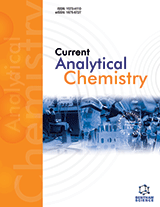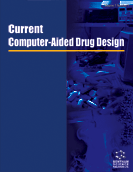Abstract
Olive biophenols affect the organoleptic and nutraceutical properties of fruits; therefore, it is an emerging research field. In addition, a plethora of health-promoting properties have been attributed to the phenolic content of olive fruits. The main biophenols can be divided into different sub-groups such as phenolic acids and alcohols, flavonoids, lignans and secoiridoids. The latter sub-group of biophenols is typical in olive fruits, since oleuropein and the products of its biotransformation characterize olive fruit. An array of genetic, agronomic and technological factors that affect the rate of synthesis and biotransformation of secoiridoids in olive fruits is discussed. Furthermore, the relationship between antioxidant activity and structures of olive biophenols is explored.
Keywords: Biosynthesis, degradation, hydroxytyrosol, Olea europaea, oleuropein, radical scavenging activity, secoiridoid.
Current Bioactive Compounds
Title:Classification, Biotransformation and Antioxidant Activity of Olive Fruit Biophenols: A Review
Volume: 8 Issue: 3
Author(s): Vlasios Goulas, Pantelis Charisiadis, Ioannis P. Gerothanassis and George A. Manganaris
Affiliation:
Keywords: Biosynthesis, degradation, hydroxytyrosol, Olea europaea, oleuropein, radical scavenging activity, secoiridoid.
Abstract: Olive biophenols affect the organoleptic and nutraceutical properties of fruits; therefore, it is an emerging research field. In addition, a plethora of health-promoting properties have been attributed to the phenolic content of olive fruits. The main biophenols can be divided into different sub-groups such as phenolic acids and alcohols, flavonoids, lignans and secoiridoids. The latter sub-group of biophenols is typical in olive fruits, since oleuropein and the products of its biotransformation characterize olive fruit. An array of genetic, agronomic and technological factors that affect the rate of synthesis and biotransformation of secoiridoids in olive fruits is discussed. Furthermore, the relationship between antioxidant activity and structures of olive biophenols is explored.
Export Options
About this article
Cite this article as:
Goulas Vlasios, Charisiadis Pantelis, Gerothanassis P. Ioannis and Manganaris A. George, Classification, Biotransformation and Antioxidant Activity of Olive Fruit Biophenols: A Review, Current Bioactive Compounds 2012; 8 (3) . https://dx.doi.org/10.2174/157340712802762465
| DOI https://dx.doi.org/10.2174/157340712802762465 |
Print ISSN 1573-4072 |
| Publisher Name Bentham Science Publisher |
Online ISSN 1875-6646 |
 15
15
- Author Guidelines
- Graphical Abstracts
- Fabricating and Stating False Information
- Research Misconduct
- Post Publication Discussions and Corrections
- Publishing Ethics and Rectitude
- Increase Visibility of Your Article
- Archiving Policies
- Peer Review Workflow
- Order Your Article Before Print
- Promote Your Article
- Manuscript Transfer Facility
- Editorial Policies
- Allegations from Whistleblowers
- Announcements
Related Articles
-
Surface-Enhanced Laser Desorption/Ionization Mass Spectrometry for Biomarker Discovery in Cutaneous Melanoma
Current Proteomics Epigenetics in Necrotizing Enterocolitis
Current Pediatric Reviews Radical Releasing Anti-tuberculosis Agents and the Treatment of <i>Mycobacterial Tuberculosis</i> Infections - An Overview
Mini-Reviews in Medicinal Chemistry L-Cysteine (3-Nitrophenyl)methyl Ester Hydrochloride: A New Chiral Reagent in the Sugar Analysis
Letters in Organic Chemistry Thalidomide Analogues as Anticancer Drugs
Recent Patents on Anti-Cancer Drug Discovery Eco-friendly Synthesis of Pyrido[2,3-d]pyrimidine Analogs and Their Anticancer and Tyrosine Kinase Inhibition Activities
Anti-Cancer Agents in Medicinal Chemistry Recent Advances of Metallocenes for Medicinal Chemistry
Mini-Reviews in Medicinal Chemistry Therapeutic Proteins: A to Z
Protein & Peptide Letters Development and Comparison of Nanosponge and Niosome based Gel for the Topical Delivery of Tazarotene
Pharmaceutical Nanotechnology A panoramic view of chronic liver diseases and natural remedies reported in Traditional Persian Medicine
Current Pharmaceutical Design Healthcare Management During A Pandemic: The Other Side of the Coin for the Treatment of COVID-19 Infection
Endocrine, Metabolic & Immune Disorders - Drug Targets Therapeutic Potential of Antileukotriene Drug-<i>Camellia sinensis</i> Extract Co-Formulation on Histamine Induced Asthma in Guinea Pigs
Current Drug Research Reviews Stationary Wavelet Transform and AdaBoost with SVM Based Pathological Brain Detection in MRI Scanning
CNS & Neurological Disorders - Drug Targets Azole Antimycotics - A Highway to New Drugs or a Dead End?
Current Medicinal Chemistry Type I Collagen and Collagen Mimetics as Angiogenesis Promoting Superpolymers
Current Pharmaceutical Design Aliphatic Nucleophilic Radiofluorination
Current Radiopharmaceuticals The Pharmacology of Cyclic Nucleotide-Gated Channels: Emerging from the Darkness
Current Pharmaceutical Design Nitric Oxide: State of the Art in Drug Design
Current Medicinal Chemistry A Green and Regioselsctive Synthesis of Xanthone and Thioxanthone Derivatives in the Presence of Heteropoly Acid Under Microwave Irradiation
Letters in Organic Chemistry Cyclodextrin Based Nanosponges: A Multidimensional Drug Delivery System and its Biomedical Applications
Current Drug Delivery


























